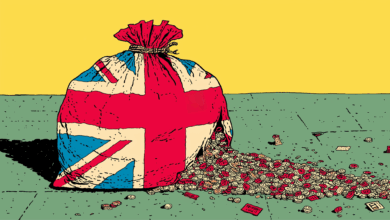Optimism Is Back in Argentina

Argentina is, once again, providing a textbook example of a political–economic virtuous cycle. Indeed, President Javier Milei’s clear victory on Sunday, October 26, over the opposition in the midterm elections, where he obtained almost 41% of the vote to 31% of the Peronists, was greeted with market euphoria. On Monday alone, the benchmark Merval index rose by over 20%. But since the Argentine peso appreciated that day, the Merval rose by 32% if measured in dollars, which represents its largest jump in two decades. Tuesday saw extended gains for stocks and bonds as well.
Optimism is back in Argentina because Milei now has more power than before and because the Peronists, who form the main opposition to his administration, have less. Indeed, Milei’s victory will enable him to uphold his vetoes of Congress bills that threaten budget stability, a key policy of his administration. Vetoes can be overridden with a two-thirds majority, and prior to the election, the opposition was able to reach this figure.
Milei’s victory will also get him closer to forming majorities in both houses of Congress, since his party will now control about 42% of House seats and one-third of the Senate. Significantly, the latter is the same proportion that is controlled by the Peronists, who held an absolute majority in that chamber from 1985 to 2021 and a near majority until October 26.
So why was optimism lost in the first place? The answer has to do with politics—and a little bit of monetary policy. In September, a state election in the province of Buenos Aires resulted in a loss by 13 points for Milei’s party to the Peronist opposition. The district—the country’s largest—is a traditional Peronist stronghold, and its governor is seen as a potential contender to the presidency in 2027. Yet, the Milei administration expected the race to be close. It was not.
Immediately, Milei’s September defeat in the Buenos Aires province triggered a run against the peso. It suddenly seemed like the Peronists were stronger than anyone expected and thus much closer to defeating Milei in 2027. Since the Peronists have an abysmal economic record and ended their last administration only two years ago with over 200% annual inflation, it made sense that everyone ran for cover and rushed to buy US dollars.
But the run against the peso was also possible because the currency was widely perceived as overvalued. In fact, besides balancing the budget—which eliminated the need to print currency to finance government expenses—the Milei administration had been managing the exchange rate and artificially propping up the peso as a tool to fight inflation.
Between September 8, when the Buenos Aires state election was held, and October 26, the government did everything in its power to keep the peso stable. This included a trip to Washington, where the Trump administration stepped in with a currency swap line intended to strengthen Argentina’s Central Bank reserves and thus the country’s ability to strengthen the peso. It seemed like tough times were ahead for the Milei administration if the September results repeated themselves.
But on election day, Milei won the national vote and even beat the Peronists in the very district where he had lost a month before—the province of Buenos Aires. Thus, the peso appreciated, even if slightly. As of October 29, it is about 2% stronger than on the Friday before the election. What will happen with the exchange rate in the future remains to be seen.
Markets are pricing in a stronger Milei, just as they did in 2023 when markets rallied after his victory and even this May after his party also unexpectedly won a state election in the city of Buenos Aires. This is the opposite of what happened in 2019, when the benchmark Merval index plunged by 48% as it became apparent that the Peronist party was going to win back the presidency after a failed administration by market-friendly Mauricio Macri.
So what does a stronger Milei mean for Argentina? More market reforms, for sure. Milei has already said his administration will advance tax and labor reform, areas where only minor changes have been implemented so far. It is expected that these new changes come through an omnibus bill that could resemble Ley Bases, a major piece of legislation Milei’s party was able to pass in 2024 which gave him special powers to deregulate the economy. More deregulation is also expected in that bill. In the meantime, the government is speeding up the privatization of a small number of state-owned companies that it has the power to privatize. Milei’s improved representation in Congress makes it more likely that other key state-owned enterprises could be privatized in the near future.
Voters’ confidence having translated into markets’ confidence one more time, Milei has the opportunity to implement market reforms on a scale not seen before in Argentina, which also include trade liberalization and an end to remaining capital controls. But perhaps the most important of these reforms is dollarization, a campaign promise by Milei that is yet to be fulfilled.
Dollarization can put an end to the seemingly perpetual peso nightmare, a currency that Argentines don’t trust. As the past two months show, the peso problem is still a reality, and it will remain so as long as it exists. Ending the peso and replacing it with the dollar, on the other hand, would bring much-needed stability to Argentines and foreign investors, who suffer from the peso’s volatility and have no confidence in it. Indeed, dollarizing Argentina’s economy would simply be a recognition of what Argentines already do when they flee their currency out of mistrust or fear for the future.
Optimism is back in Argentina, and it is certainly warranted. If Argentina doesn’t miss the opportunity to dollarize its economy, optimism can be even higher.
The post Optimism Is Back in Argentina was first published by the Foundation for Economic Education, and is republished here with permission. Please support their efforts.



